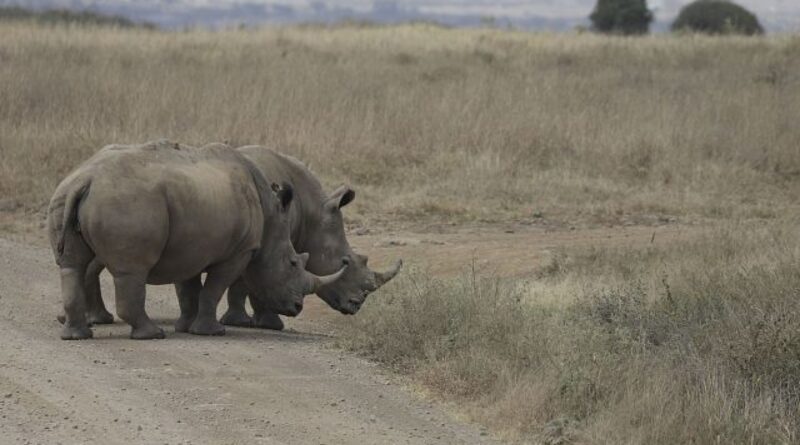Scientists edge closer to saving the Northern White Rhino from extinction
It was the first time it had been performed.
In September last year, Professor Thomas Hildebrandt from the BioRescue project performed the transfer of a Southern White Rhino embryo into a surrogate mother.
But the day was not historic for the Southern White Rhino, which has a population of roughly 20,000.
It was a great day for another subspecies, the Northern White Rhino – Population: two.
The transfer of an embryo was a test to see whether it was possible to create a lab-made embryo and implant it into a similar rhino.
“We produced a proven pregnancy in Africa with an embryo generated here in Europe from European parents. And this embryo grew into a nice little rhino,” says Hildebrandt.
The next step is to transfer an embryo of the nearly extinct Northern White Rhino into a Southern White Rhino surrogate mother.
That’s because while the last two remaining Northern White Rhinos are female, due to health complications, they both cannot bear children.
The last male northern white rhino, Sudan, was 45 when he was euthanized in 2018 due to age-related complications.
In this lab in Berlin, Northern White Rhino embryos are ready.
“Today, we can say that we have 33 Northern White Rhino embryos. Pure Northern White Rhino embryos. And these embryos derive from two different fathers,” explains Hildebrandt.
The Southern White Rhino surrogate mother died from a disease unrelated to the pregnancy about 70 days after the artificial embryo transfer.
Hildebrandt and his colleagues quickly flew to Kenya to test the embryo, which had been removed from the deceased mother and confirmed that it had developed as it should until the fatal disease struck.
The next step is to attempt the same process with a Northern White Rhino embryo.
The embryos were created using sperm that had been frozen, in some cases decades ago, and egg cells from one of the remaining female Northern White Rhinos.
Half of the embryos are kept in Berlin, the other half are in Italy.
If scientists are successful with artificial transfers into Southern White Rhino surrogates, it may be possible to slowly rebuild the Northern White Rhino population.
“We are here today with 33 embryos. We have a lot of embryos available, and we estimate that we can produce about 10 to 15 babies. That means these babies will, of course, also produce new egg cells. The program could then continue indefinitely,” explains Hildebrandt.
The first successful transfer could happen as early as this year, and if everything goes to plan, Hildebrandt hopes that Northern White Rhinos could be released into the wild in 20 years or so.
That is, if the funding continues.
A grant from the German government ends next year, and the BioRescue organization is looking for new partners.
“We can prove that human society can not only destroy biodiversity. We can actually repair it and bring it back. That is a really important message,” adds Hildebrandt.
Roughly 20,000 southern white rhinos remain in Africa. That subspecies as well as another species, the black rhino, are bouncing back from significant reduction in their populations due to poaching for their horns.
Some conservation groups have argued that it is probably too late to save the northern white rhino with in vitro fertilization, as the species’ natural habitat in Chad, Sudan, Uganda, Congo and Central African Republic has been ravaged by human conflict.
Sceptics say the efforts should focus on other critically endangered species with a better chance at survival.

